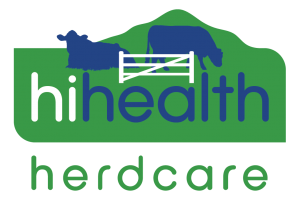bTB Herd Accreditation Programme
Enabling herds with good biosecurity to be recognised and reduce the risk when trading cattle

The CHeCS Bovine TB Herd Accreditation programme was launched in November 2016. The aim of the programme is to allow a more ‘risk based approach’ to bovine TB (bTB) when trading cattle. The programme focuses on biosecurity measures to prevent the introduction of disease. The potential benefits for farms participating in the programme include improved status for low risk holdings in higher risk or edge areas, reduced risk of buying in disease and a systematic, supported approach to controlling disease.
Farmers that sign up to the HiHealth Herdcare bTB herd accreditation programme, give permission for us to access their 10 year statutory bTB testing history through APHA. We assess the history and assign a herd bTB score based on the test results and confirmation from the herd vet that a suitable health plan is in place to address biosecurity with the aim of preventing a disease breakdown. Participating herds which are adhering to the requirements of the scheme are given a bTB score according to the number of years they have tested free:
Herd score 10 (lowest risk) - 10 years or more since the last bTB breakdown within the herd.
Herd score 9 - 9 years since the last bTB breakdown within the herd.
Herd score 1 - 12 months since the last bTB breakdown within the herd.
Herd score 0 (high risk) - the herd is officially bTB free (OTF), but has had a breakdown within the last year.
The bTB herd accreditation programme relies on the farmer and vet working together through the health scheme to systematically reduce risk. APHA should provide daily downloads from their database so that HiHealth Herdcare are notified of any changes affecting the herd score.
Added animals constitute a risk of introducing infection and there are some additional tests over and above statutory testing required on added animals by herds participating in the CHeCS scheme. Pre-movement skin testing is required on the holding of origin, unless the animal has been in a low-incidence area since birth. To comply with the rules of the scheme, post-movement skin testing is compulsory, unless animals have resided in a CHeCS score 10 herd since birth. Pre and post movement testing is carried out at the cost of the keeper, unless it coincides with statutory testing.
As a farmer already using CHeCS, You will find the scheme relatively straightforward to incorporate into your existing regime, and could get particular benefit if you are a low risk herd. More information is available on the www.checs.co.uk website.
